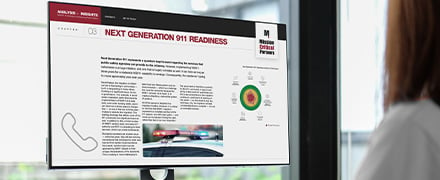Cautious Optimism Surrounds CTIA Announcement Regarding Improving 911 Location Accuracy
Posted on September 10, 2018 by Dave Sehnert
Last week was a great week for public safety—at least we think it was. Let me explain.
CTIA, the trade association that represents wireless communications carriers, announced that the four largest nationwide wireless carriers in the United States—AT&T, Sprint, T-Mobile and Verizon—will integrate device-based hybrid (DBH) location solutions into their networks. DBH technology has evolved rapidly, and trials have shown that they deliver location information much faster and much more accurately than the Wireless Phase II data delivered by the location technologies currently employed by the carriers.
To date in the United States, device-based hybrid location technology comes in two flavors: Hybridized Emergency Location (HELO) developed for Apple’s iPhone operating system and Emergency Location Service (ELS) developed for Google’s Android OS. Both technologies aggregate numerous data sources—e.g., the Global Positioning System (GPS), Bluetooth beacons, Wi-Fi hotspots, data from mapping/navigation applications, and activity-based apps—to deliver more-accurate location data, particularly indoors, for 911 calls made from smartphones.
Good News...on the Surface
So, on the surface, last week’s announcement appears to be very good news for the 911 community—in fact, MCP has advocated energetically for the carriers to adopt DBH technology for quite some time now. But as with nearly everything in life, the devil is in the details—and the CTIA announcement was short on them. Yes, the press release described what the carriers plan to do:
- Provide DBH-based location information to PSAPs everywhere they offer service
- Support the Apple and Android operating systems, among others
- Make the technology available to smartphone users without the need for special applications or user interactions
- Make it available to public safety answering points without them having to install new hardware or software
But what was missing from the press release was the specific detail the 911 community needs on how the carriers are going to follow through with their announcement. The carriers know that it is a great idea to implement DBH location technology because it clearly appears to be considerably better than what they’re using now, especially for indoor callers. That answers the question of “why.” But it doesn’t answer the question of “how,” which, from the perspective of PSAP officials, is the far more important question.
What Needs to Happen NEXT
There are a few things that ideally would occur to ensure that DBH location technology fulfills its promise:
- DBH location service needs to be seamless and transparent to the 911 caller and the telecommunicator who fields the call
- To accomplish this, the wireless carriers need to make DBH location data the primary source of data for any 911 call that originates from a smartphone
- The best way to accomplish that would be for the wireless carriers to implement a new class of service centered on DBH technology; NENA has developed a CoS to support supplemental geodetic location from third-party with “SDXY”, but it is not currently adopted by ATIS. This would result in telecommunicators being alerted when receiving a 911 call to the type of device being used and the type of data they received.*
Without the above, telecommunicators will have no idea of what they’re dealing with when they receive a wireless 911 call with DBH location—which is a big problem when more than 75 percent of 911 calls originate from wireless devices. Telecommunicators have grown weary of Wireless Phase II location (WPH2 COS) and need a distinct dataset to inform them that they have location from modern location-acquisition technologies.
We believe that robust training is a critical component of any DBH location solution rollout so that telecommunicators are better prepared for its arrival than they were when wireless location first was implemented.
The CTIA announcement is very exciting and a great first step toward implementing a much-needed technological breakthrough that will result in many more lives saved nationwide. The next great step will be for the wireless carriers to let the 911 community in on their implementation strategies as soon as possible.
This week we’re following the House Subcommittee on Communications and Technology hearing on September 14 that will discuss three pending bills seeking to improve 911 and public safety communications. Stay tuned.
Editor's Note: An earlier version of this article stated that a separate DBH COS from NENA is needed. NENA has developed a COS to support supplemental geodetic location from third-party with “SDXY”, but it is not currently adopted by ATIS.
Related Posts
Apple Announces a Promising Step Toward Solving 911's Wireless Location Challenges







